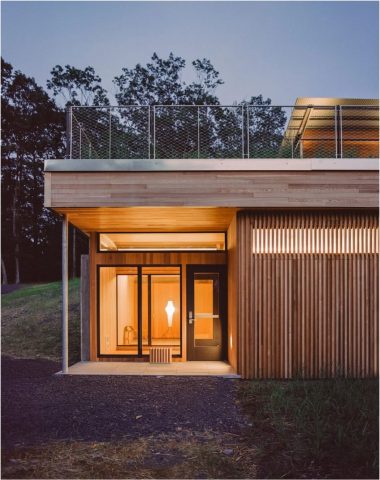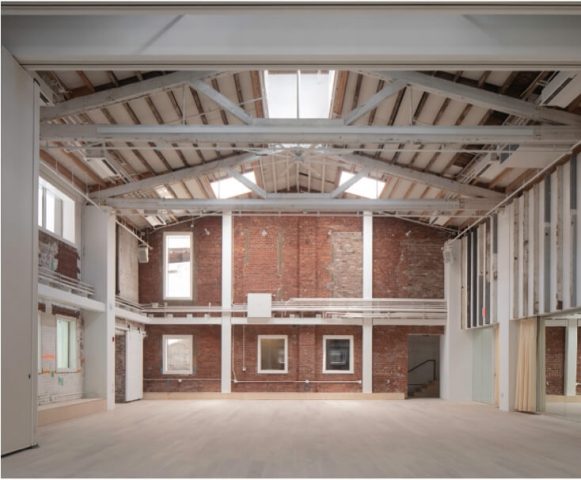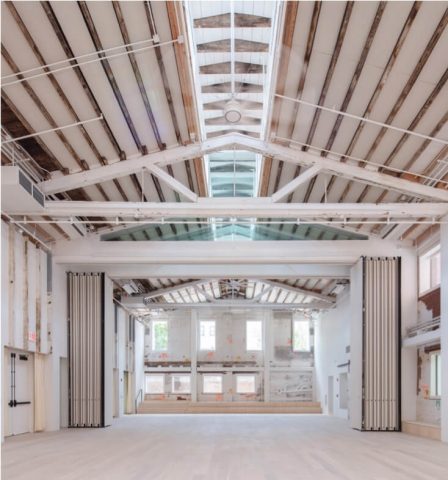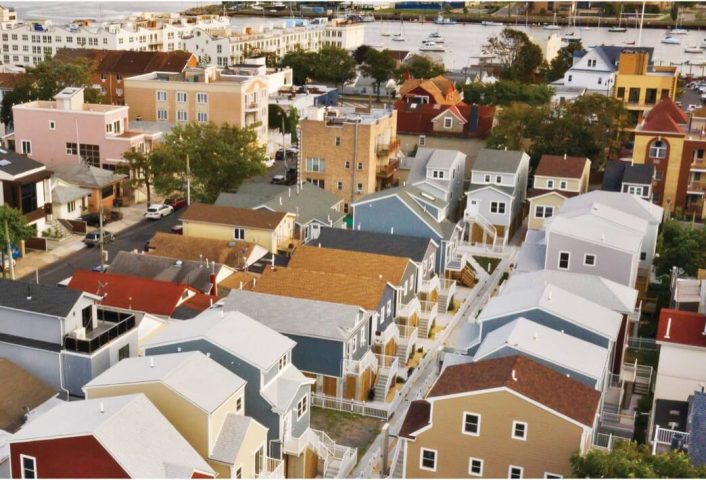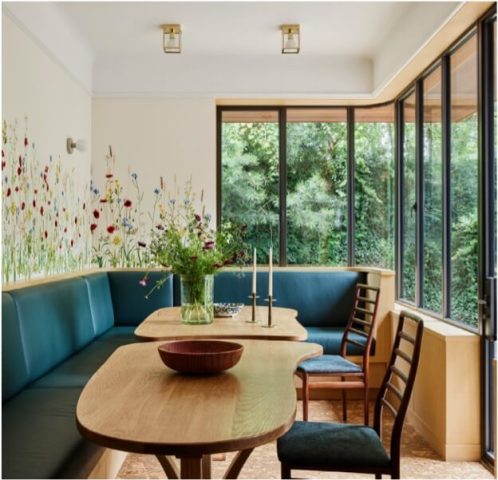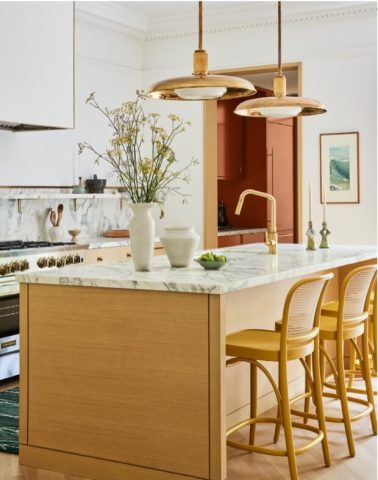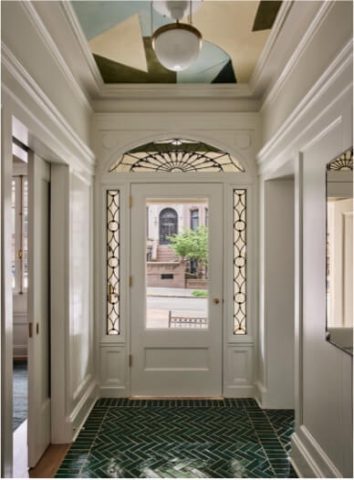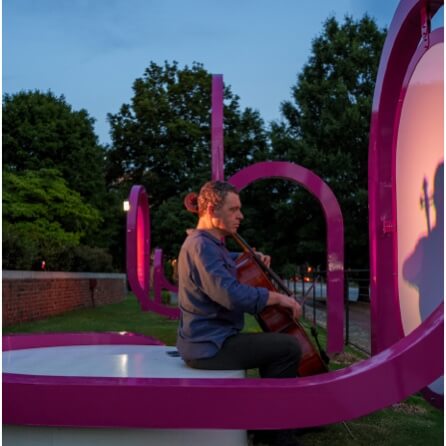Since the 19th century, the Catskill Mountains have offered a serene and scenic reprieve for the increasingly urbanized northeastern seaboard. Thomas Cole enshrined the landscape into the American consciousness by painting its grand sylvan panoramas. The Piaule Landscape Retreat was designed to immerse visitors into that same natural setting while emphasizing the pristine beauty that the region is known for.
The hotel is comprised of 24 individual cabins that are scattered among the trees on a secluded, west-facing hill that overlooks the Catskill Escarpment. Each cabin is oriented to a large operable window that opens up to the outdoors to give bedrooms the feel of a screened porch. These windows present visitors with a sensory atmosphere of outdoor camping from the comfort and privacy of an indoor cabin.
The landscape hotel is designed to foster interaction among visitors in communal spaces, the lodge is a gathering space for dining and relaxing. Hidden below a green terrace is a fully featured spa with a pool and hot tub which overlook the western view.
Piaule Catskill encourages visitors to continue their exploration beyond the hotel grounds on foot with nature trails that loop in and out of the surrounding woods and wetlands.







